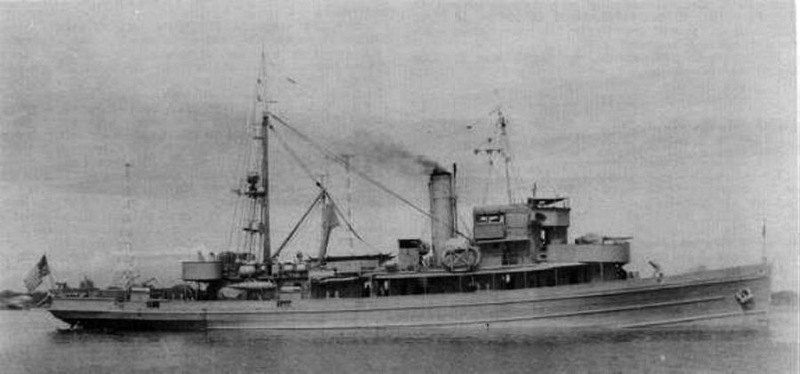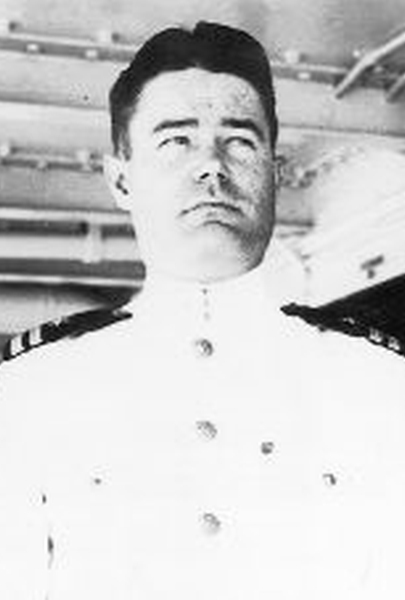
| WW2 and History Collection / Weapons and
Equipment / Ships / Country U / United States / Lapwing-class / USS Whippoorwill (AM 35 / AT 169 / ATO 169) |
||||||||||||||||||||||||||||
| |
||||||||||||||||||||||||||||
| Updated: |
March 27th, 2016 |
|||||||||||||||||||||||||||
 |
United States of
America |
|||||||||||||||||||||||||||
| USS Whippoorwill (AM 35 / AT 169 / ATO 169) |
||||||||||||||||||||||||||||
|
 |
|||||||||||||||||||||||||||
| USS Whippoorwill, Philippines, June 1941 |
||||||||||||||||||||||||||||
| The USS Whippoorwill was a Lapwing-class
Minesweeper, build in 1917/1918 and commissioned as Minesweeper No. 35,
USS Whippoorwill on April 1st, 1919. On March 1st, 1944 the ship was
reclassified as Fleet Tug, USS Whippoorwill (AT 169). |
||||||||||||||||||||||||||||
| History The USS Whippoorwill was laid down at the Alabama Drydock and Shipbuilding Company, Mobile, Alabama on December 12th, 1917. On July 18th, 1918 the ship was launched. USS Whippoorwill was commissioned as Minesweeper No. 35 on April 1st, 1919. After the fitting out period, the ship left Boston on July 3rd, 1919 for Europe. The ship was stationed at Kirkwall asn participated in the North Sea Mine Barrage, placed withtin Division 3, Minesweeper Squadron Atlantic Fleet. USS Whippoorwill returned to the United States in November 1919 and then was assigned to the Pacific Fleet. On July 17th, 1920 the ship was redesignated as USS Whippoorwill (AM 35) and was stationed at Pearl Harbor as from March 1st, 1921. Although classified as a minesweeper, the ship in its service with the Pacific Fleet was also used as a Fleet Tug, Target Tower and Seaplane Recovery Ship. The ship was also used as a Suvey ship on scientific expeditions in the Pacific and the Far East. After being refitted and modernized, USS Whippoorwill on May 5th, 1941 was assigned to the Asiatic Fleet and bound for the Philippines. Underway, the ship was assigned as a direction-finding statio for patrol planes for Pacific Fleets Patrol Wing 10. The ship itself reached Manila on May 30th, 1941 and was assigned to Mine Division 9, Mine Squadron 3, Asiatic Fleet. Additioonal to its service as minesweeper, the ship her was also used as Fleet Tug and Target Tower. Lter that year the ship was attached to Inshore Patrol, stationed at Olongapo. By the end of 1941, USS Whippoorwill was overhauled at the Verdadero Dockyard and then placed on patrol duties with USS Tulsa (PG 22) and USS Asheville (PG 21). By December 1941, the ship was stationed at Cavite, participating in minelsweeping operations. December 8th, 1941, Commanding Officer Lieutenant Commander Charles A. Ferriter instructed his men after the news of the attack on Pearl Harbor became news. December 10th, 1941 the ship came under attack by Japanese aircraft while in Cavite. During the attack it assisted ships in trouble an was specifically in action in saving the USS Peary (DD 226), which was hit andin trouble. The following day, orders were received that USS Whippoorwill was to sail for Borneo, in the Dutch East Indies. December 12th, 1941, the ship left, accompanied by USS Tulsa (PG 22), USS Asheville (PG 21) and USS Lark (AM 21) and joined Task Force 7, bound for Celebes. From there USS Whippoorwill and USS Tulsa sailed for Java. With Surabaya as its homebase, the ships patrolled the area until into February 1942, when she was ordered to Tjilatjap, at the South coast of Java. The ship arrived there on February 26th, 1941 and was oredered to help in a search party for survivors of the sunken Seaplane Tender USS Langley (AV 3), together with USS Lark (AM 21), the next day. The search did not reveal any success due to the fact that survivors were already picked up by other ships. February 28th, 1942, USS Whippoorwill and USS Lark (AM 21), arrived at the scene of the sinking of the steamlines s.s. City of Manchester that was sunk by the Japanese Submarine I-53 (I). Both the ships started picking up survivors and returned them to Tjilatjap. Wounded were transferred to USS Tulsa (PG 22). March 1st, 1942 the ship arrived at Tjilatjap and was ordered to retreat towards Australia. USS Whippoorwill arrived at Fremantle on March 9th, 1942 and used it as its homebase until it was transferred to Albany in May 1942. In August 1942 the ship returend to Fremantle. During the yaer 1942 and the beginning of 1943, the ship was operating from Exmouth Bay, Albany and Fremantle, until the ship went into drydock at Fremantle in March 1943. April 24th, 1943 the ship was back at Exmouth and then went towards Fremantle, from where the ship was active in anti-submarine patrols until the end of November 1943. As from December 1st, 1943, the ship was completely refitted to be used for other purposes. On March 1st, 1944 the ship was reclassified as Fleet Tug, USS Whippoorwill (AT 169). The refitting was completed on March 5th, 1944, after which the ship was placed in service with Commander Service Force, 7th Fleet. The ships homebase was to be Brisbane where it arrived on March 20th, 1944. In Brisbane the final adjustments were made to be operated as an ocean-going tug. Her first tug operatio was the towing of USS LST 385 to New Guinea. After this the USS Whippoorwill served in Hollandia, Mios Woendi, Seeadler Harbor and the Admiralty Islands as tug for towing battle damaged ships. On May 15th, 1944 the vessel was redesignated to Ocean-Going Tug, Old and received the designation ATO 169. After operating as a tug in New Guinea again and near Leyte in February 1945, USS Whippoorwill was send to the Philippine Islands and served as a harbor tug in Manila from June 15th, 1945. On December 20th, 1945 the ship sailed for Eniwetok together with USS Vireo (ATO 144) and USS Rail (ATO 139) and on January 4th, 1946 towards Pearl Harbor, arriving on January 15th, 1946. USS Whippoorwill and USS Rail left for San Francisco on January 25th, 1946, arriving there on February 5th. On April 17th, 1946 the ship was decommissioned and struck form the Navy List on June 10th, 1946. On November 6th, 1946 USS Whippoorwill was transferred to the Maritime Commission for disposal. |
||||||||||||||||||||||||||||
| For her service USS Whippoorwill was awarded the: | ||||||||||||||||||||||||||||
 |
Asiatic Pacific Campaign Streamer with one bronze campaign star |
|||||||||||||||||||||||||||
 |
||||||||||||||||||||||||||||
| USS Whippoorwill tendering a seaplane in 1920 |
||||||||||||||||||||||||||||
|
|
||||||||||||||||||||||||||||
| During the ships career, USS Whippoorwill was part of: |
||||||||||||||||||||||||||||
|
||||||||||||||||||||||||||||
|
||||||||||||||||||||||||||||
| Text:
Wilco Vermeer Sources: - USS Whippoorwill / NavSource Online (Retrieved March 2nd, 2015 - Whippoorwill (Retrieved March 2nd, 2015) - USS Whippoorwill (AM-35) / Wikipeida (Retrieved March 26th, 2015) |
||||||||||||||||||||||||||||
| © WW2 History Collection, Wilco Vermeer, 2015 |
contact | |||||||||||||||||||||||||||
